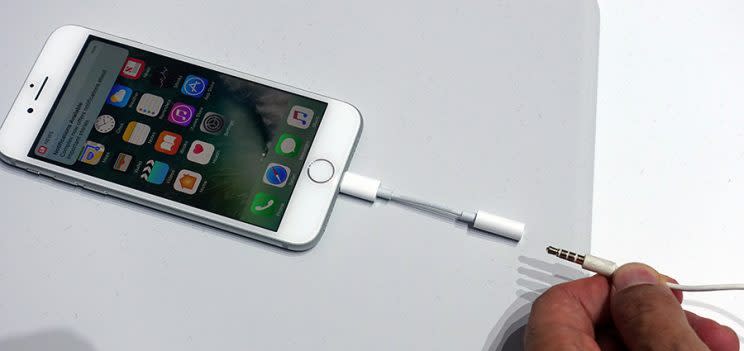Sorry, Apple, the headphone jack isn’t going anywhere
BARCELONA — Two things unite almost every phone on display here at Mobile World Congress 2017: Android and a headphone jack.
Apple (AAPL) doesn’t exhibit its wares at this trade show, so the domination of Google’s (GOOG, GOOGL) operating system is predictable. But the headphone jack’s persistence did not look so inevitable when Apple cut it from the iPhone 7 and iPhone 7 Plus last September.
Lenovo’s Motorola subsidiary had already shipped a phone without a headphone hack, the Moto Z, and Apple’s influence over the rest of the smartphone industry remains formidable — indeed, within months, the Chinese firm LeEco had debuted a lineup of Android phones devoid of headphone jacks. As my colleague David Pogue predicted in a post approving Apple’s move: “Other brands worldwide will be following suit.”
The hardware on display here at the world’s largest mobile tech conference, though, suggests otherwise.
Hi, jack
The presence of the traditional audio-output port may not have been surprising in a mass-market phone like Motorola’s $229 Moto G5 Plus — forcing customers to use their existing headphones with an easily-lost adapter does not help a phone look affordable or accessible. Nor was it surprising to see a 3.5 mm connector on high-end, plus-sized models like LG’s G6.
But two days of walking around the show floor showed companies expressing a consistent unwillingness to abandon the humble headphone jack, even on models as thin as, or thinner than, the iPhone 7. The Croatian vendor NOA’s H10le, with the same 7.1 mm thickness as Apple’s smartphone? Jack. The Chinese firm Oppo’s 6.5-mm thick R9s? It’s got a jack, too.
As Creative Strategies analyst Carolina Milanesi summed things up: “No jack is not a trend yet.”
All these companies can point to sound reasons for keeping the “legacy” component, too. The 3.5 mm headphone jack may date to 1968, but it works perfectly fine at conducting audio to people’s ears, nobody has to pay to license it and it works with a vast universe of existing hardware.
Also relevant: Most companies can’t expect to pull an Apple by declaring a technology obsolete.
“For Android vendors in particular it’s a big risk since there’s so little differentiation between them as it is, so anything like this could tip a potential buyer to a competitor,” said Jackdaw Research analyst Jan Dawson.

A contrary example
The MWC floor revealed only one company willing to do away with the headphone jack: HTC. The Taiwan-based firm, which has struggled financially for years despite shipping such well-reviewed models at the HTC 10, used its exhibit to showcase the U Ultra and the U Play, which rely on their USB-C ports for audio output.
Unlike, Apple, though, the company didn’t make the move to save space, but rather to incorporate its “USonic” feature, which lets the phones’ headphones calibrate themselves to your ears and provide noise cancellation.
That, at least, represents an improvement over the standard headphone feature set. And unlike Apple’s proprietary Lightning connector, USB-C is an increasingly-widely-used standard — most new phones support it. If the headphone jack is ever going to die, USB-C is its only viable replacement in the non-Apple universe.
But HTC is still taking a risk, as you might guess from the failure of the U Ultra’s product page to state upfront that there’s no headphone jack. Instead, it offers this fine-print disclosure: “HTC USonic is compatible with USB-C connection only.”
For now, the effects of the iPhone’s excommunication of the headphone jack seem limited to two things. One is the growth of iPhone-only accessories that aim to ease the compromises required by having only one output port on a device. Pioneer, for example, is showing off a $150 set of Lightning headphones that include a Lightning input to allow you to charge your phone and listen to music at the same time.
The other, as Milanesi noted, is that phone spec sheets must now list the headphone jack as a supported feature.
More from Rob:
The FCC just gave you a reason to hold off on buying a 4K TV
Broadband companies can’t build out networks, and it’s hurting consumers
Wireless carriers are fighting for your cash, and that’s good news
How Verizon’s new ‘unlimited’ plan compares to the competition
Study finds most people are scarred of being hacked, but don’t do much about it
Email Rob at [email protected]; follow him on Twitter at @robpegoraro.
